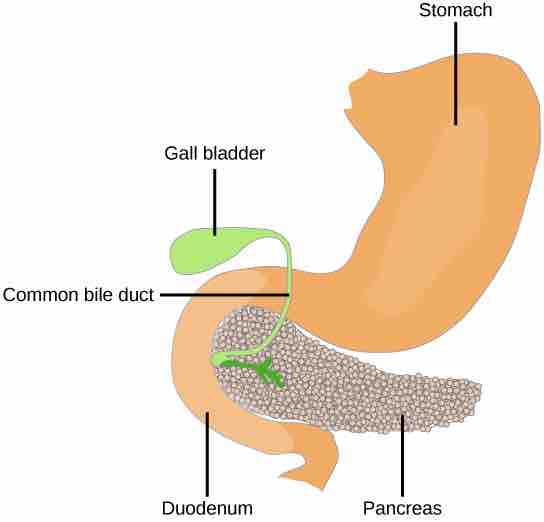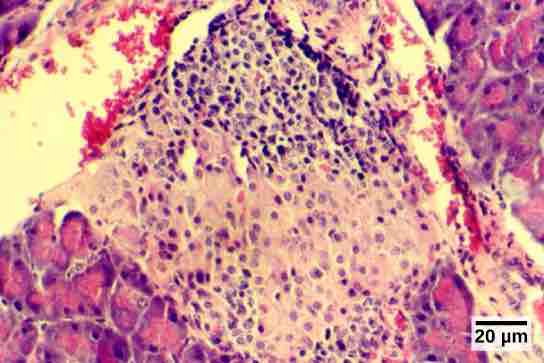The Pancreas
The pancreas is an elongated organ that is located between the stomach and the proximal portion of the small intestine . It contains both exocrine cells that excrete digestive enzymes and endocrine cells that release hormones. It is sometimes referred to as a heterocrine gland because it has both endocrine and exocrine functions.

Pancreas
The pancreas is found underneath the stomach and points toward the spleen. It is both an endocrine and exocrine gland.
As an endocrine gland, the pancreas produces several important hormones,such as insulin and glucagon, which are secreted into the bloodstream to regulate blood sugar levels, along with other activities throughout the body. As a digestive organ, the pancreas secretes pancreatic juice containing digestive enzymes that assist the absorption of nutrients and the digestion in the small intestine. Food particles are reduced to basic elements that can be absorbed by the intestine and used by the body. These enzymes help to further break down the carbohydrates, proteins, and lipids in the chyme.
The endocrine cells of the pancreas form clusters called pancreatic islets or the islets of Langerhans . The pancreatic islets contain two primary cell types: alpha cells, which produce the hormone glucagon, and beta cells, which produce the hormone insulin. These hormones are responsible for the regulation of blood glucose levels. As blood glucose levels decline, alpha cells release glucagon to raise the blood glucose levels by increasing rates of glycogen breakdown and glucose release by the liver. When blood glucose levels rise, such as after a meal, beta cells release insulin to lower blood glucose levels by increasing the rate of glucose uptake in most body cells, and by increasing glycogen synthesis in skeletal muscles and the liver.

Islets of Langerhans
The islets of Langerhans are clusters of endocrine cells found in the pancreas; they stain lighter than surrounding cells. The alpha and beta cells produce glucagon and insulin, respectively.